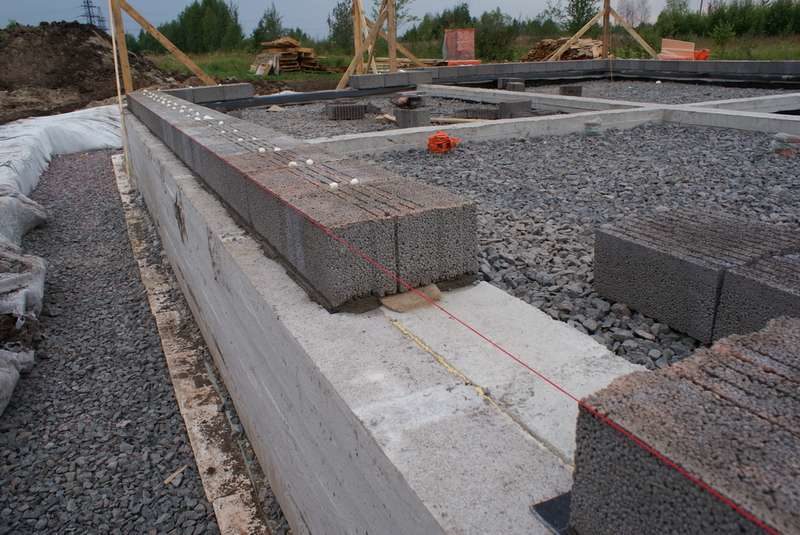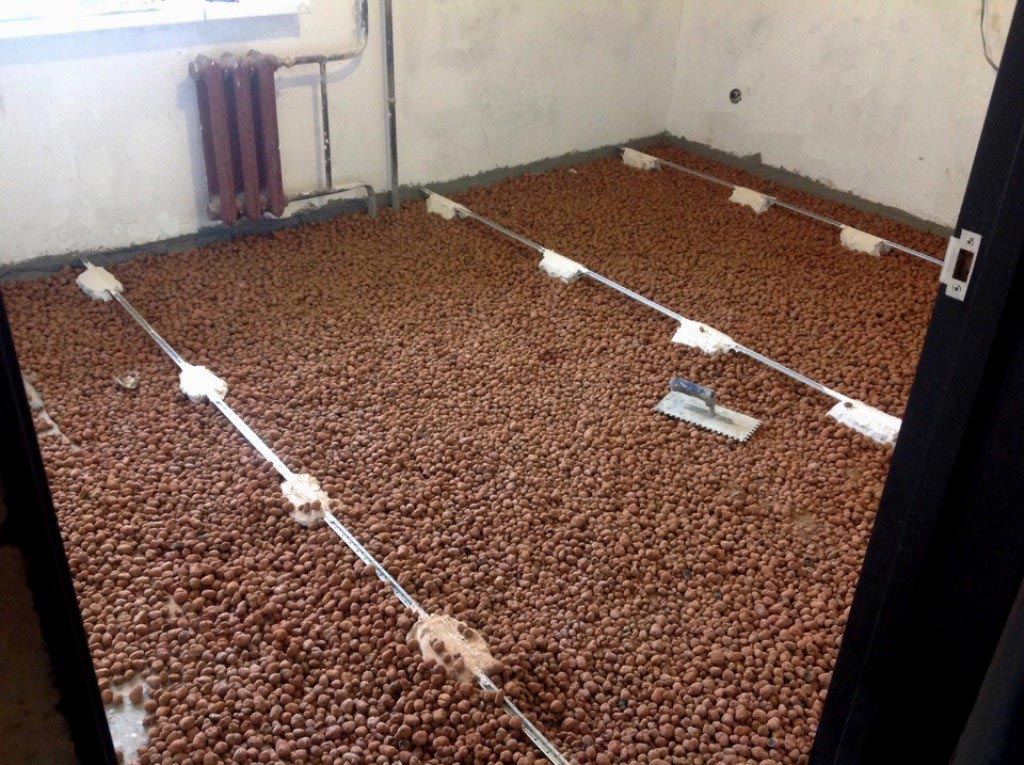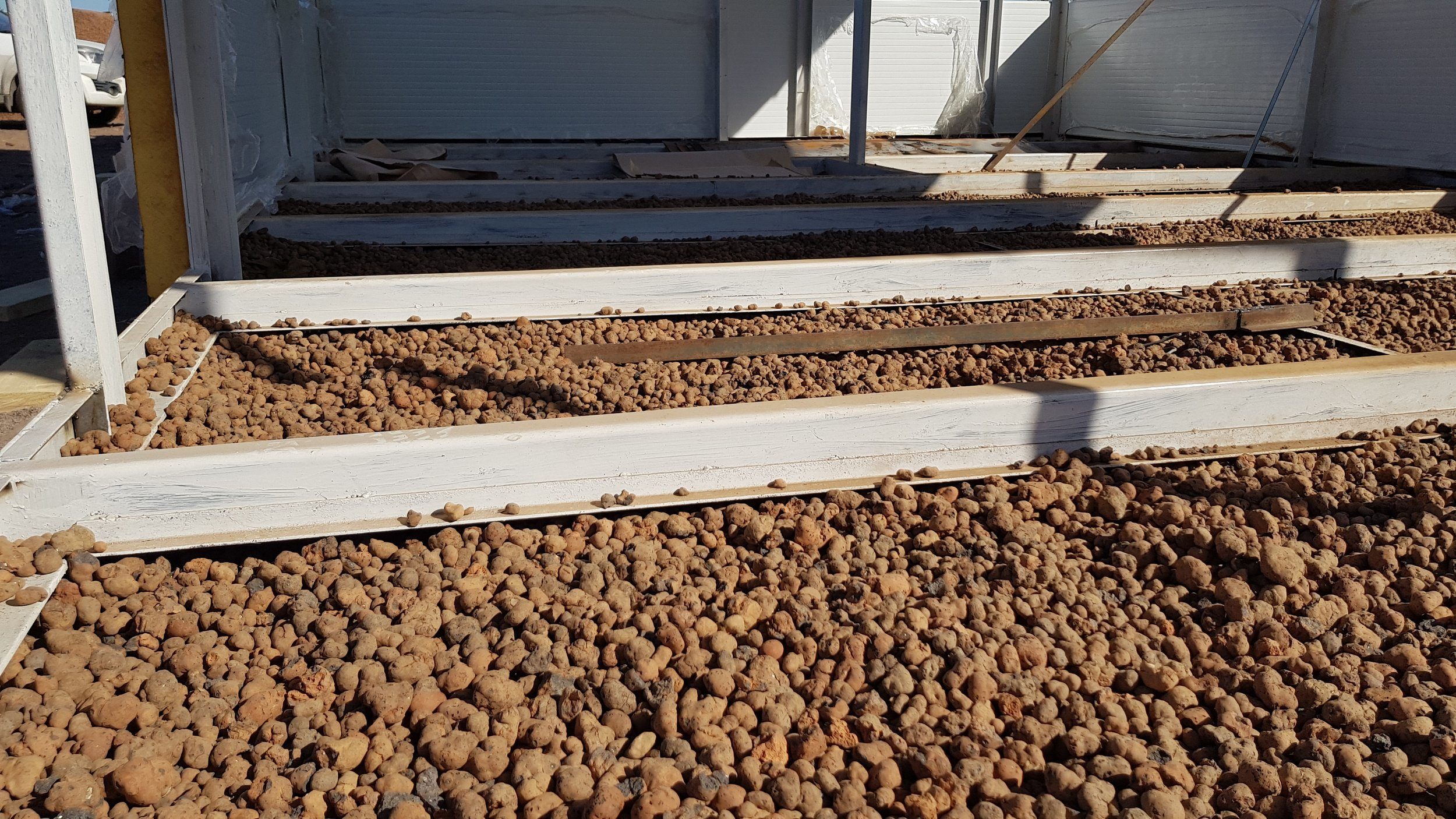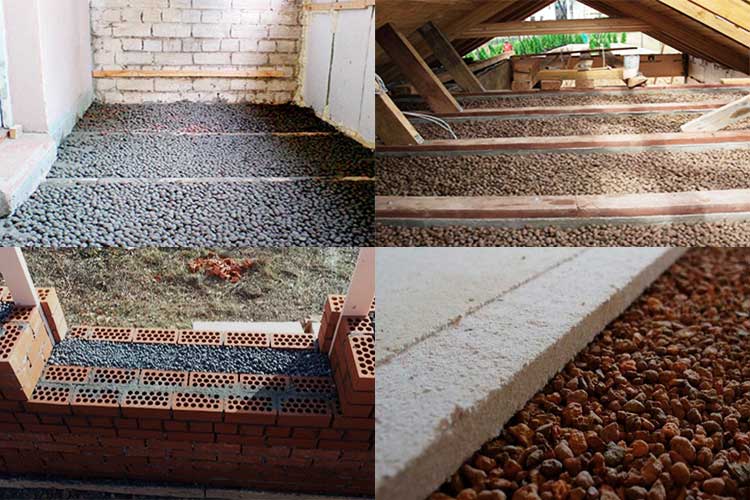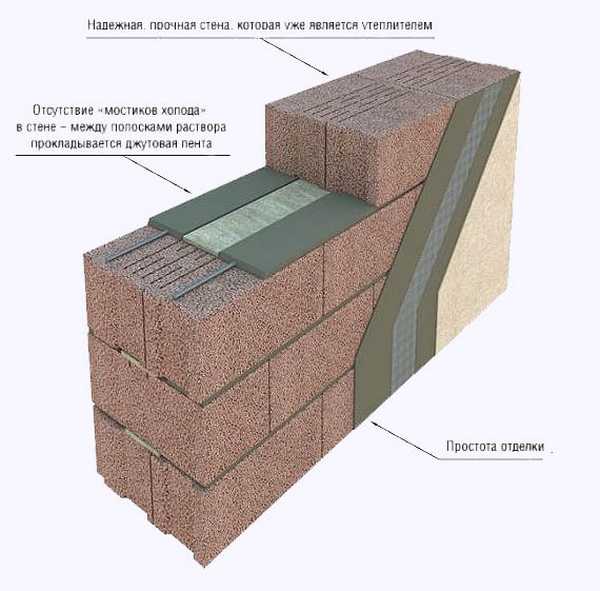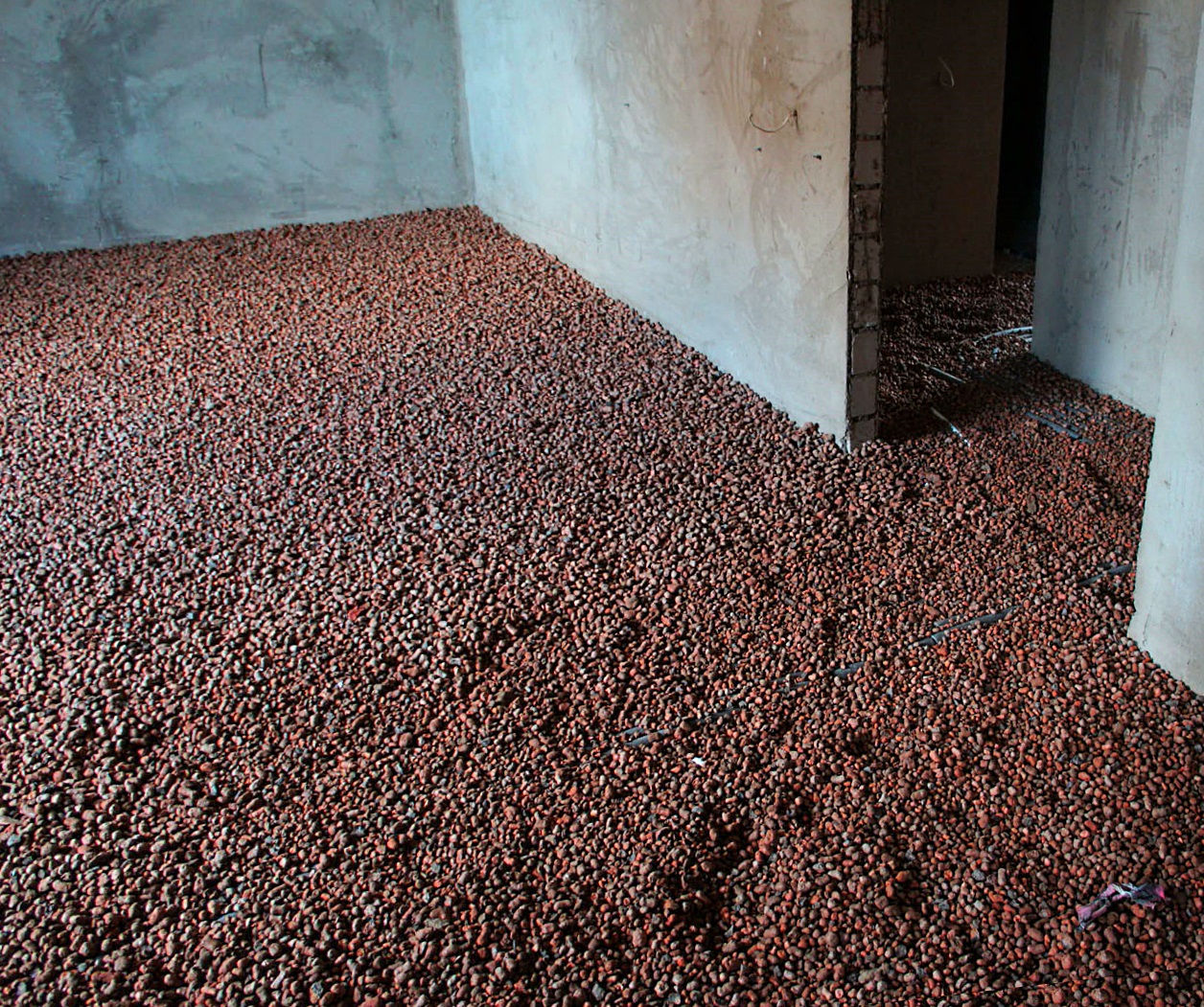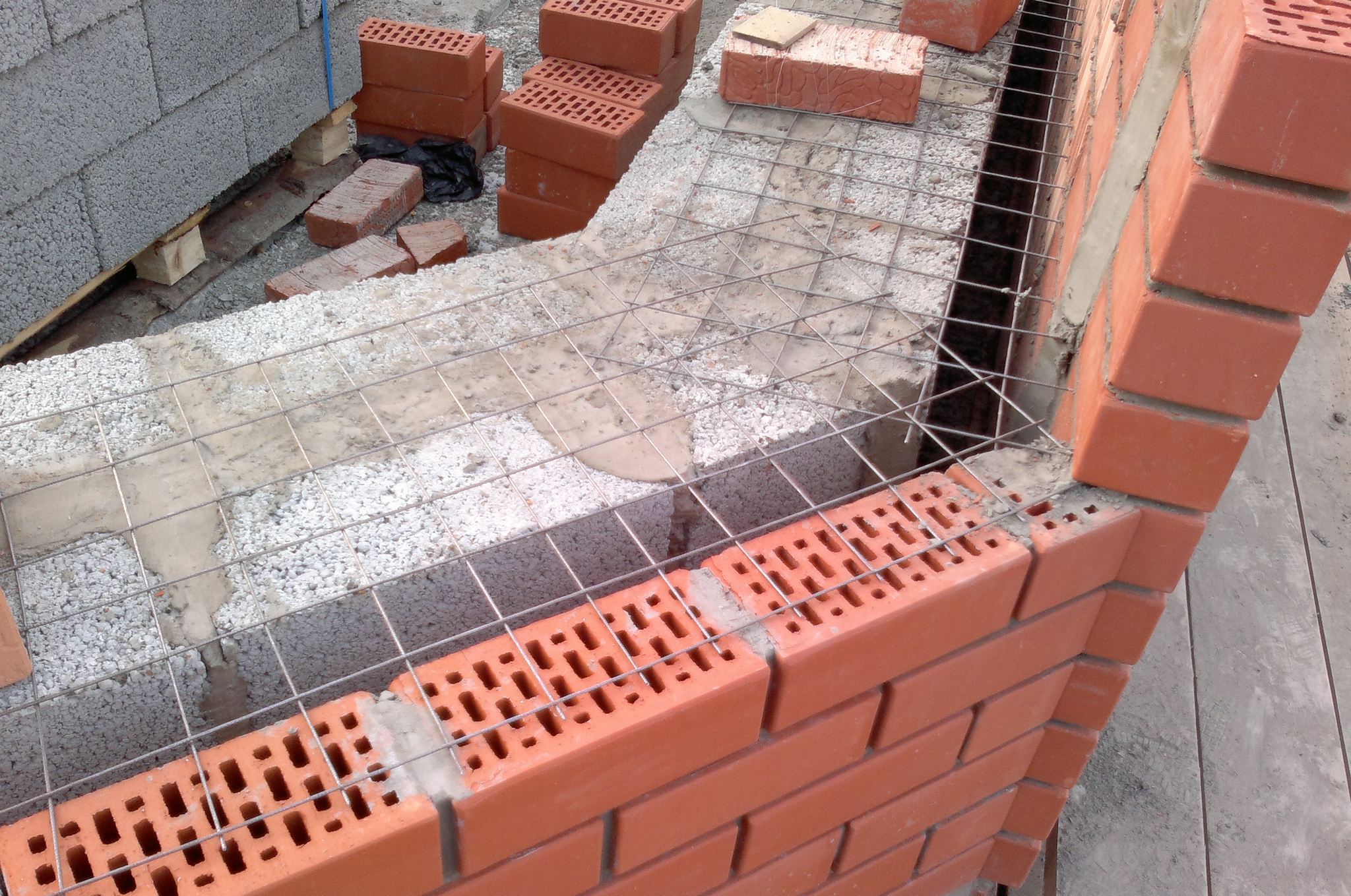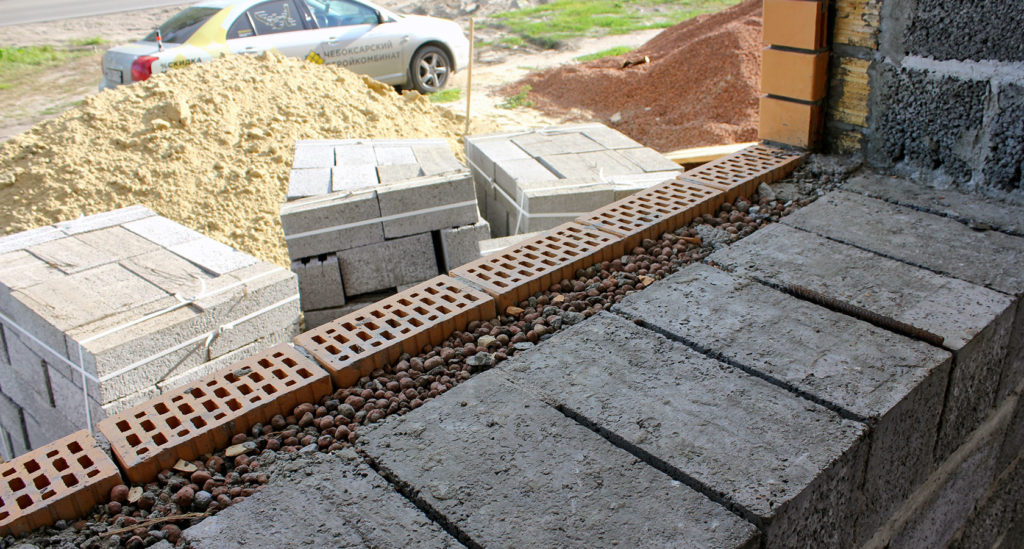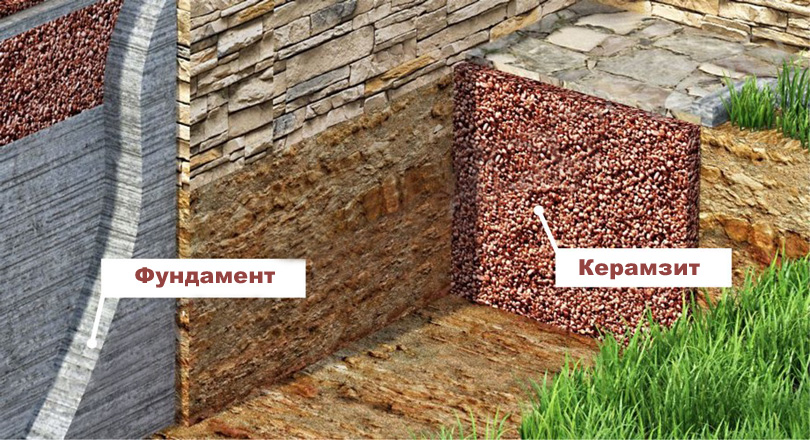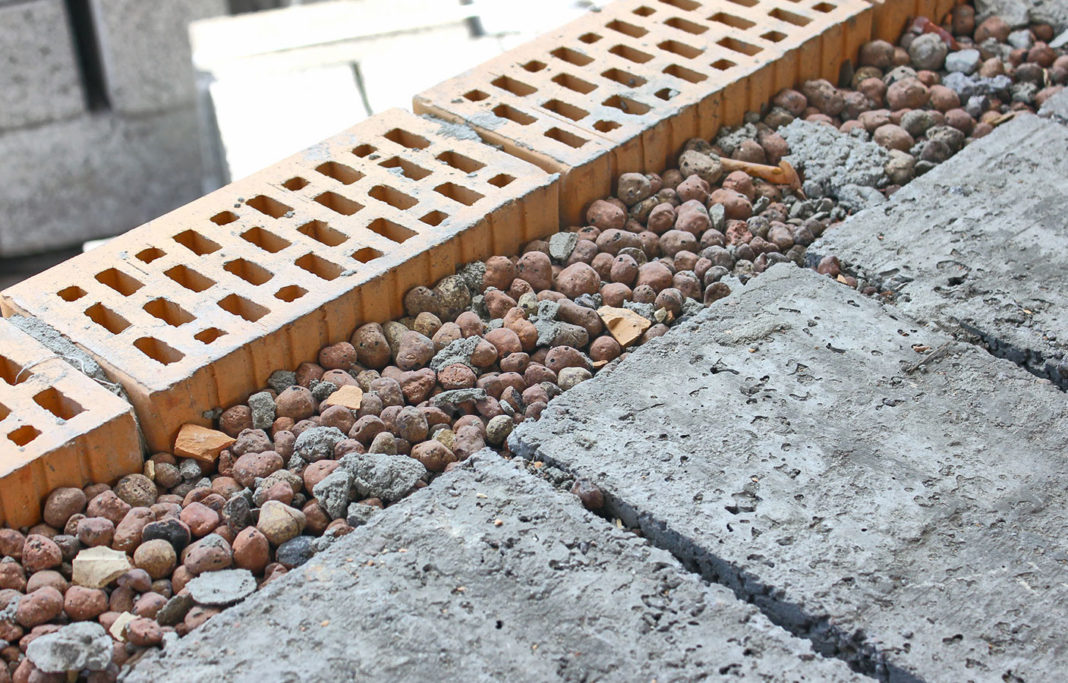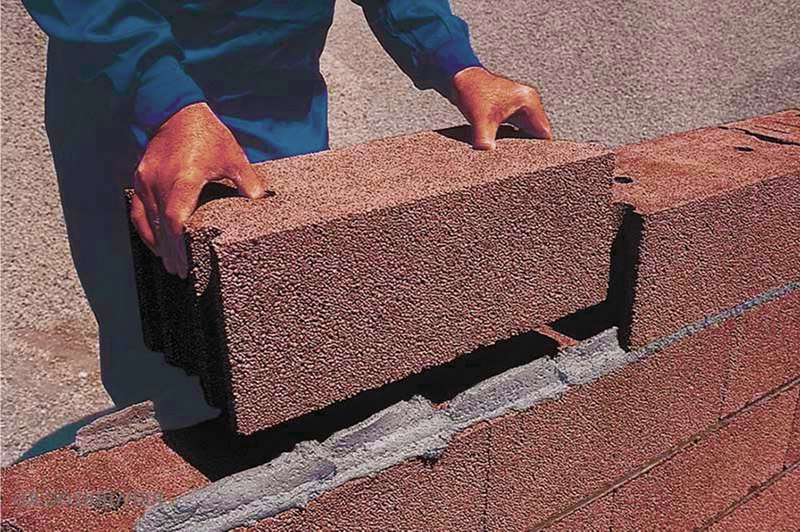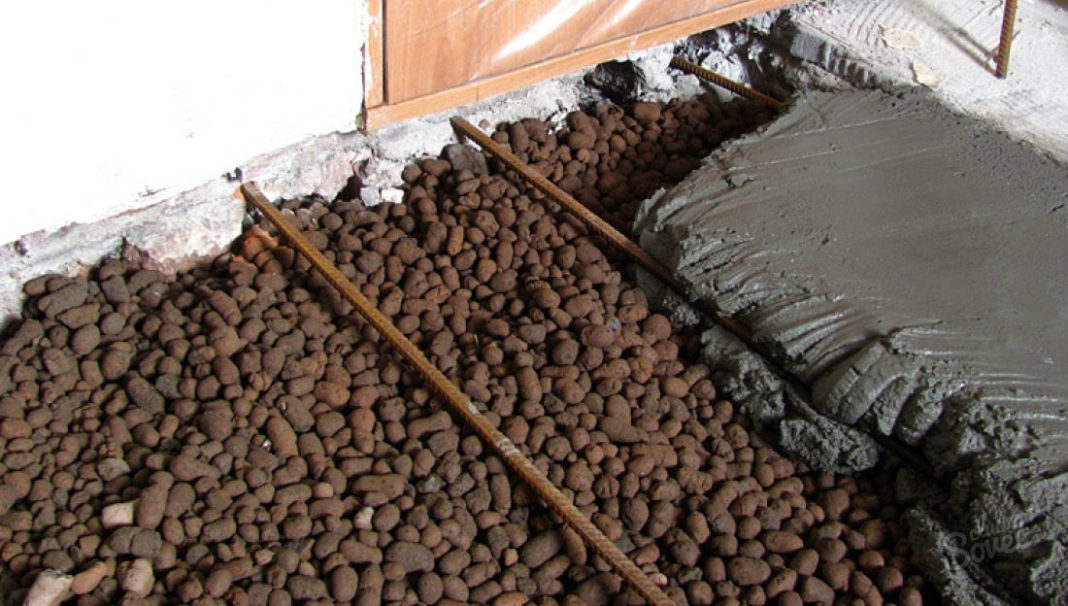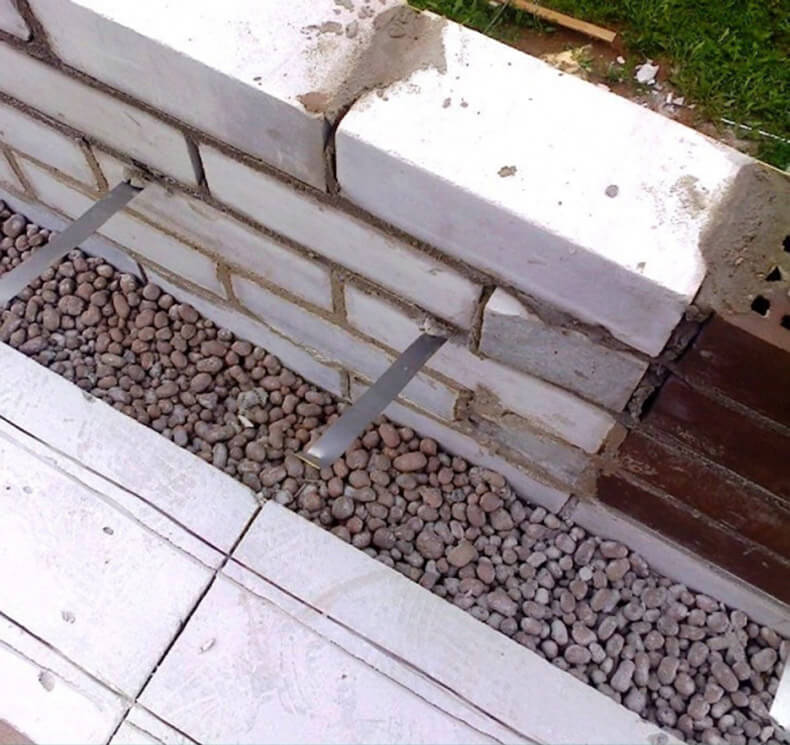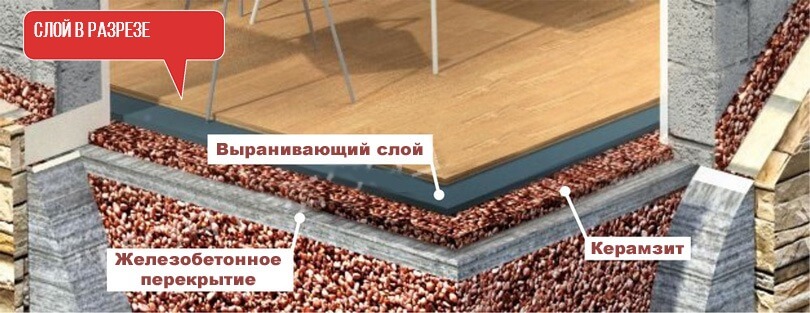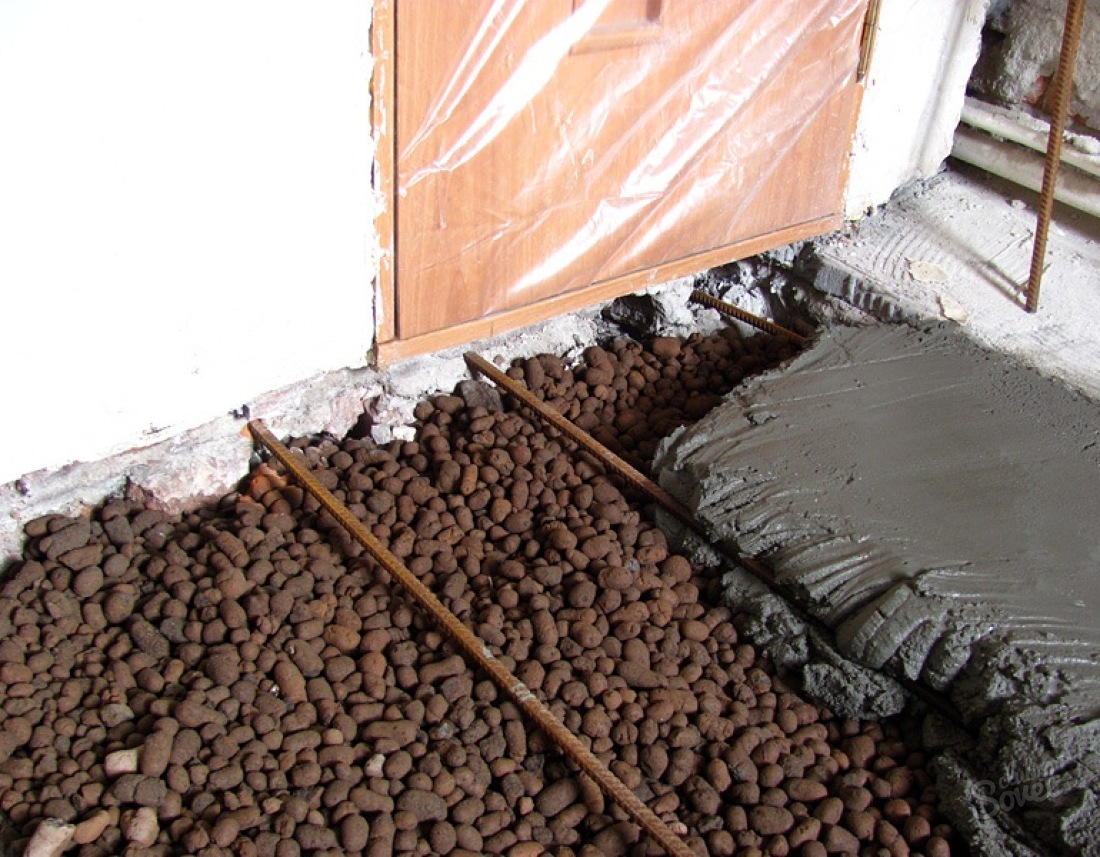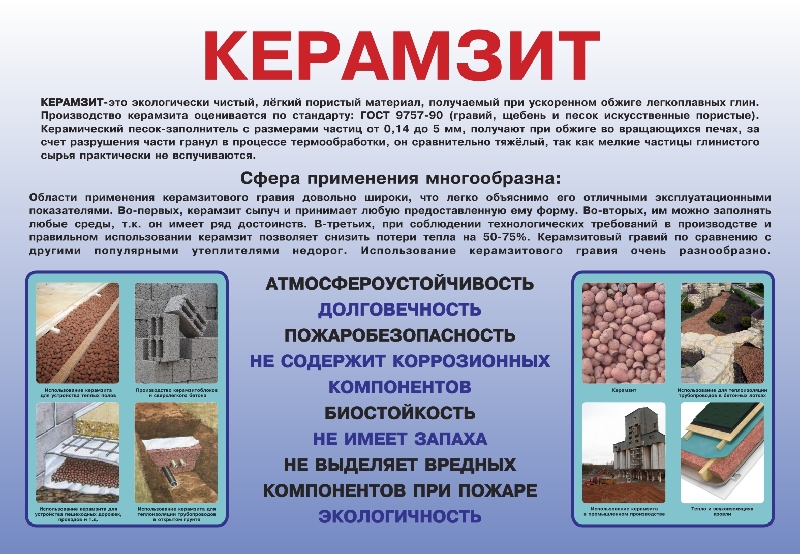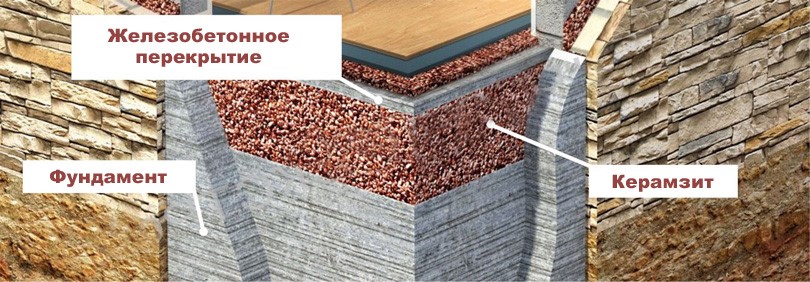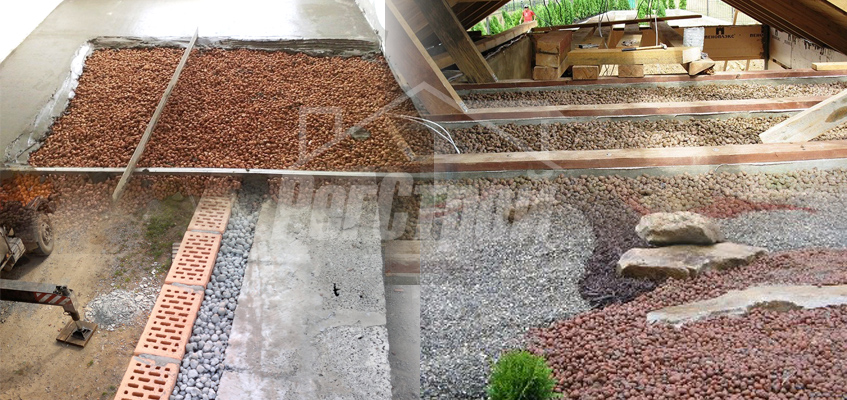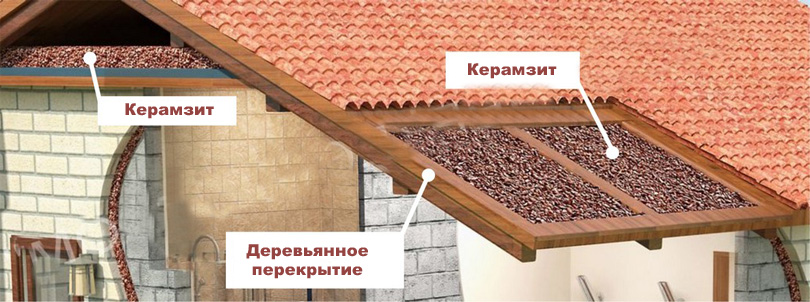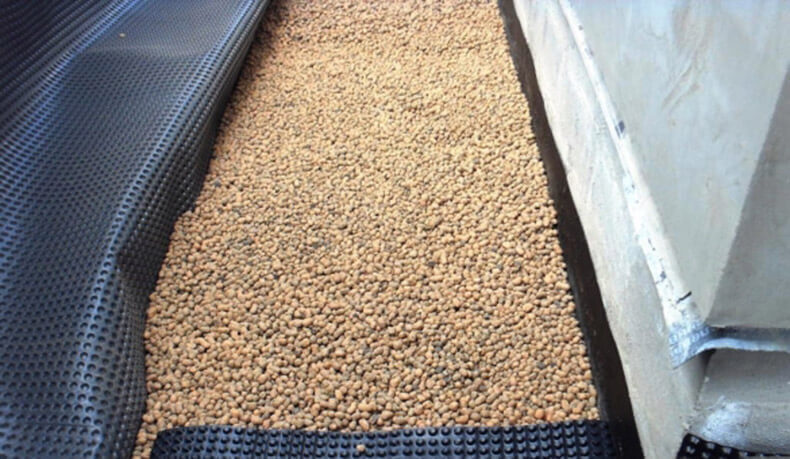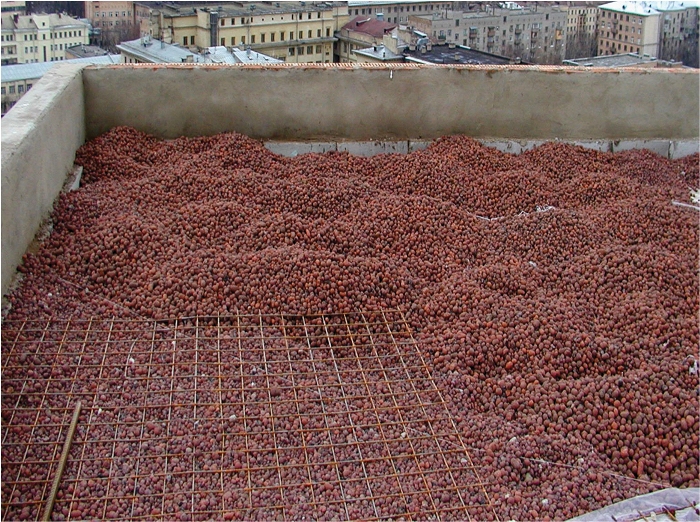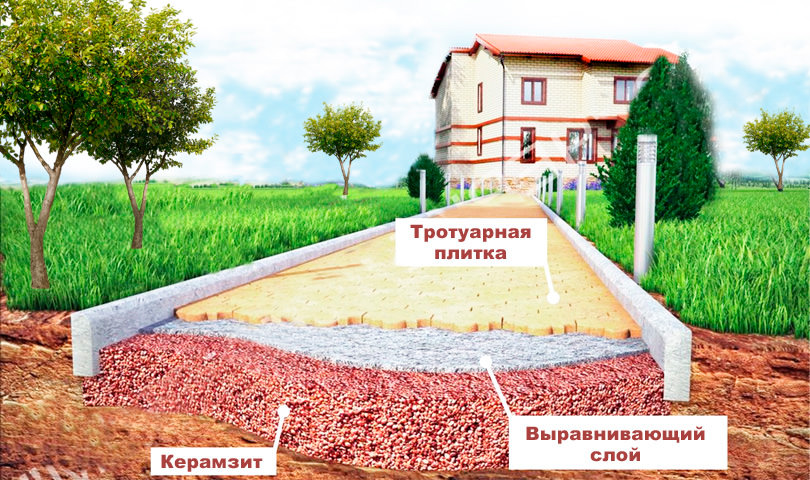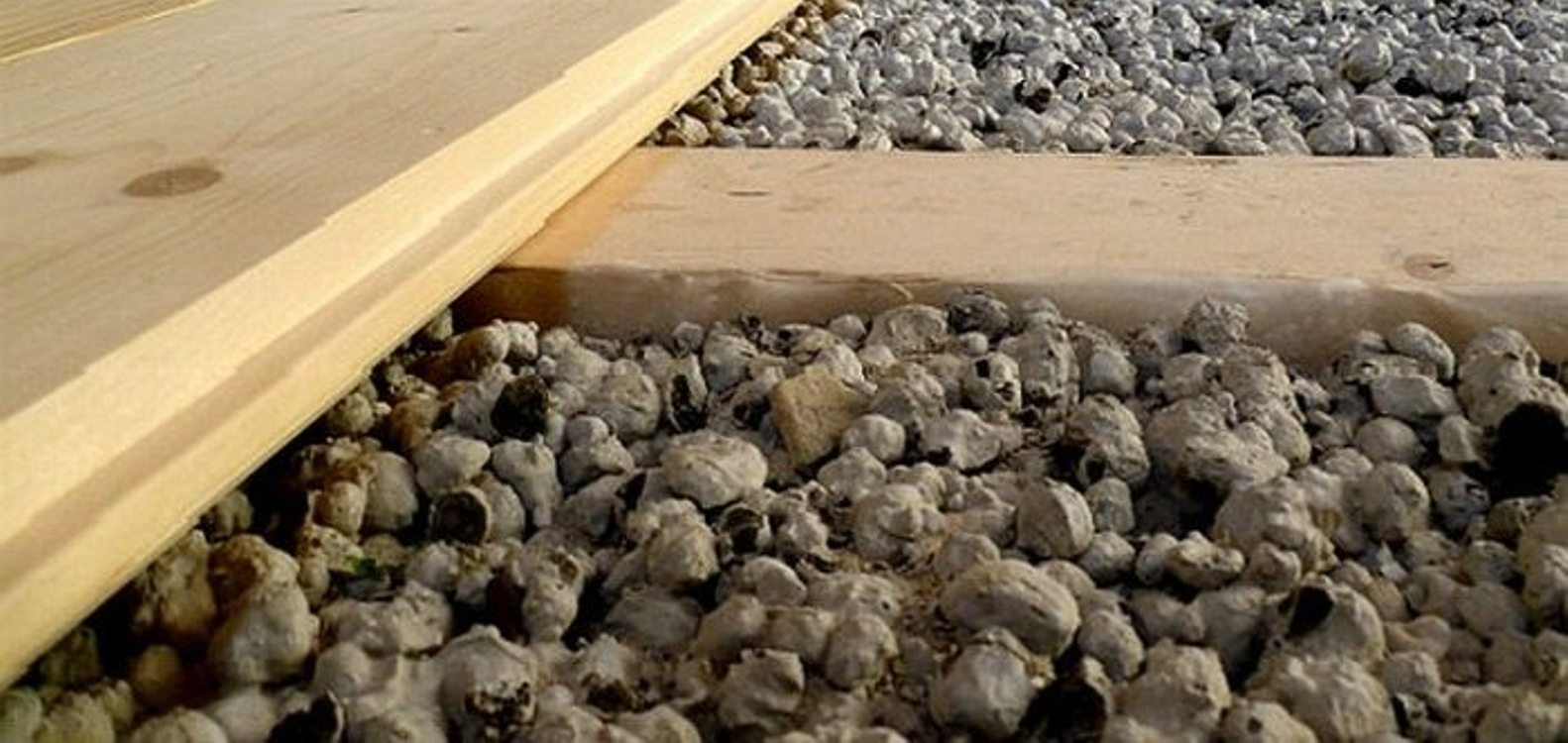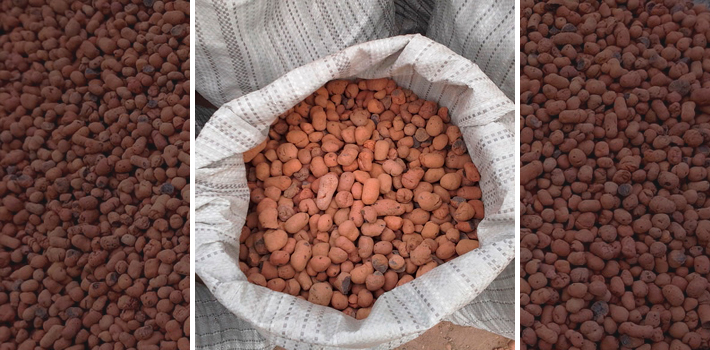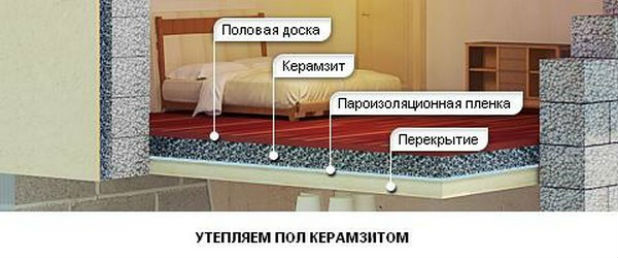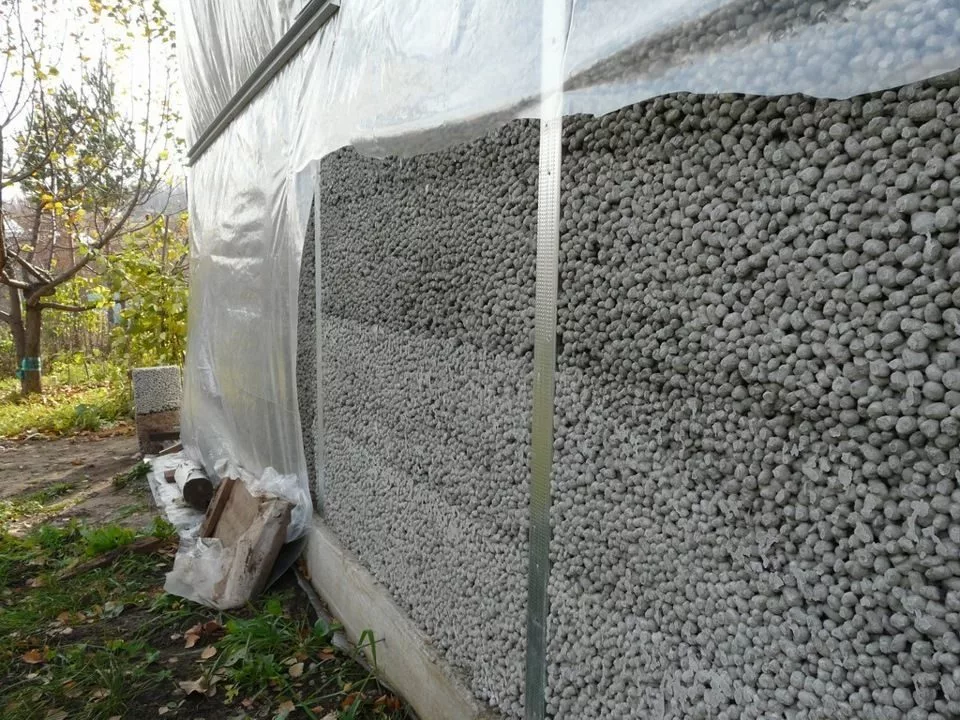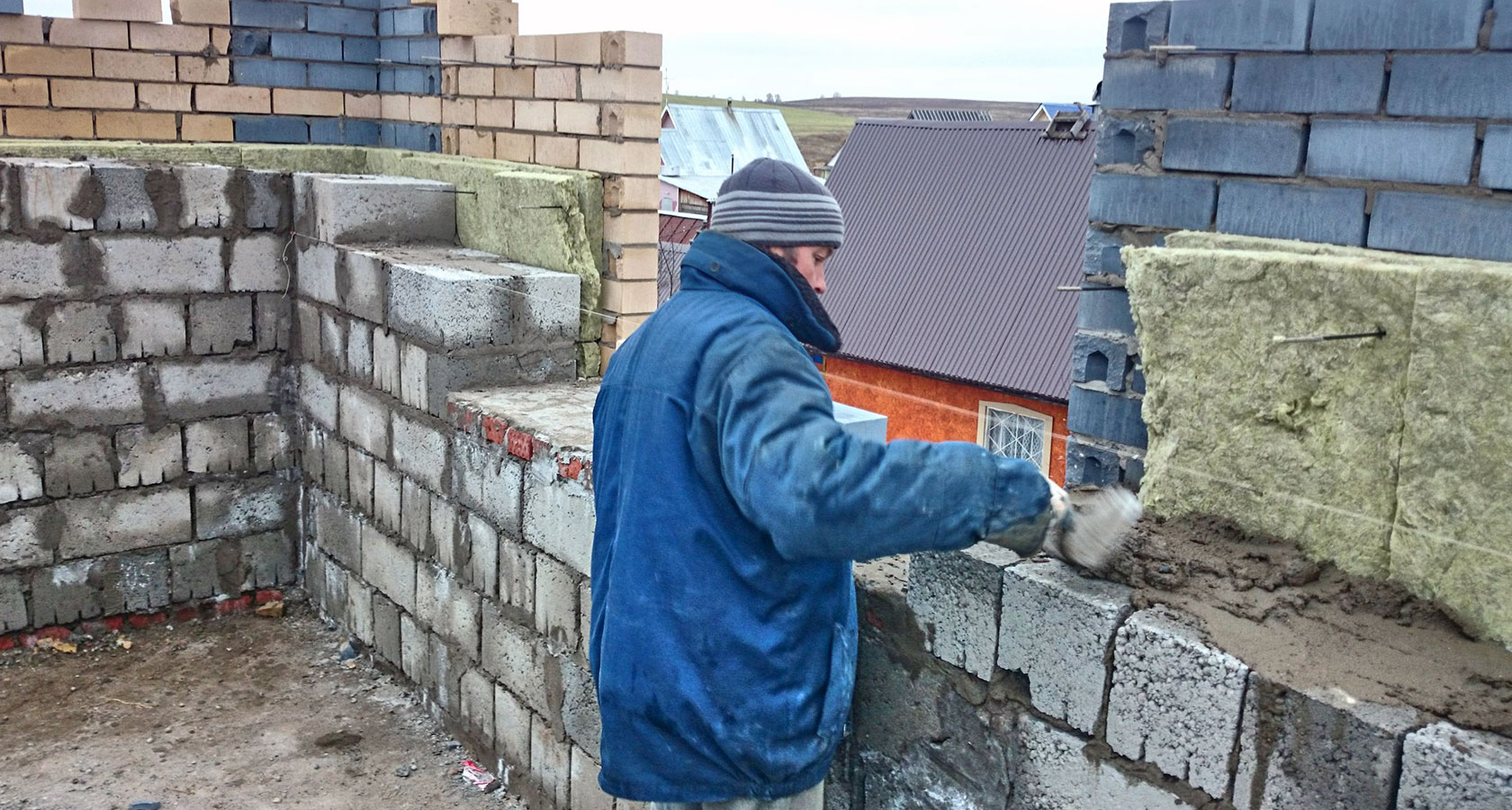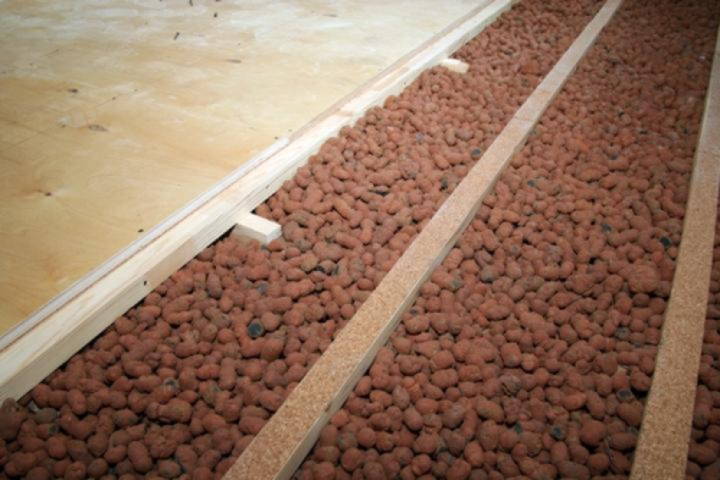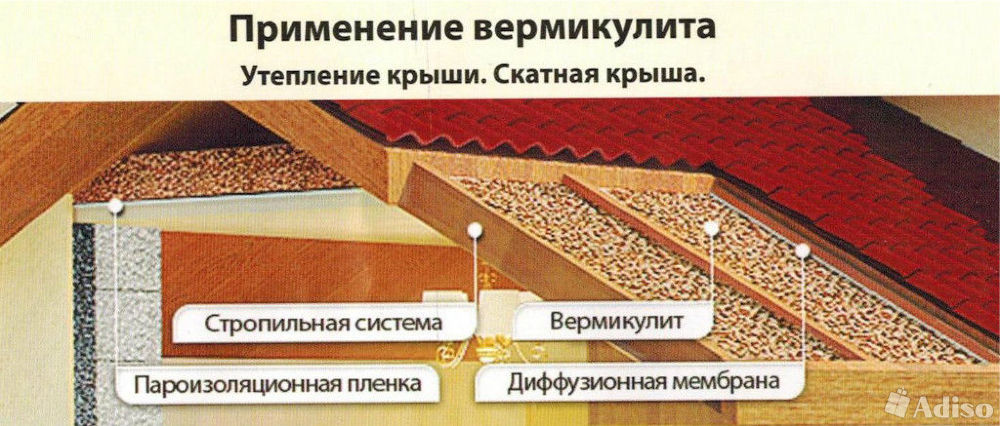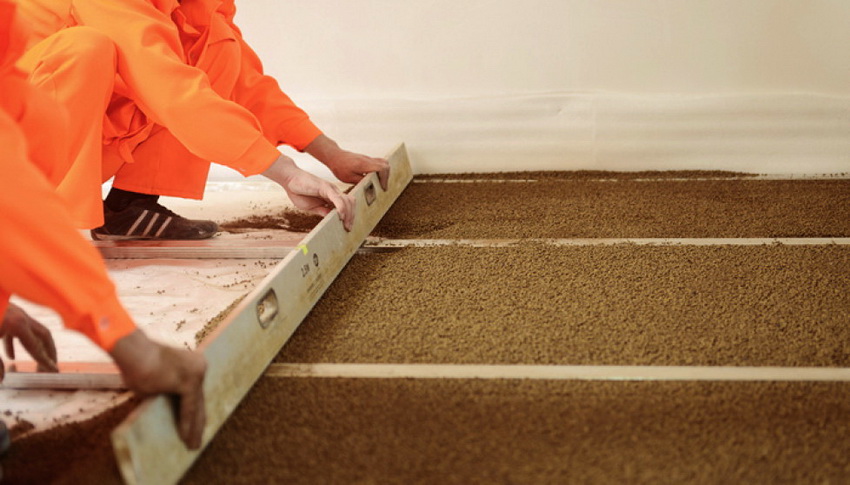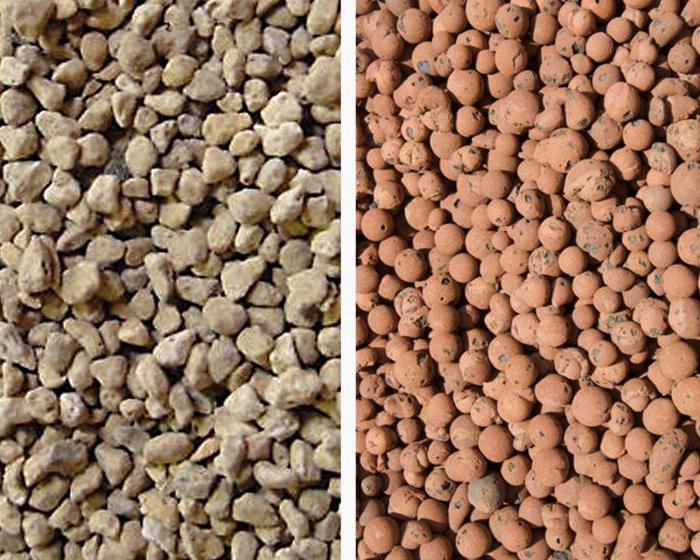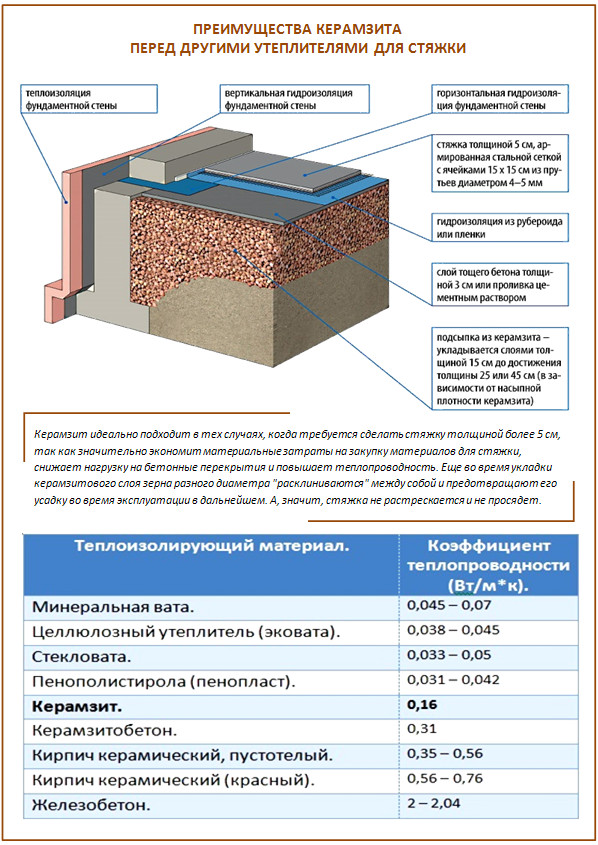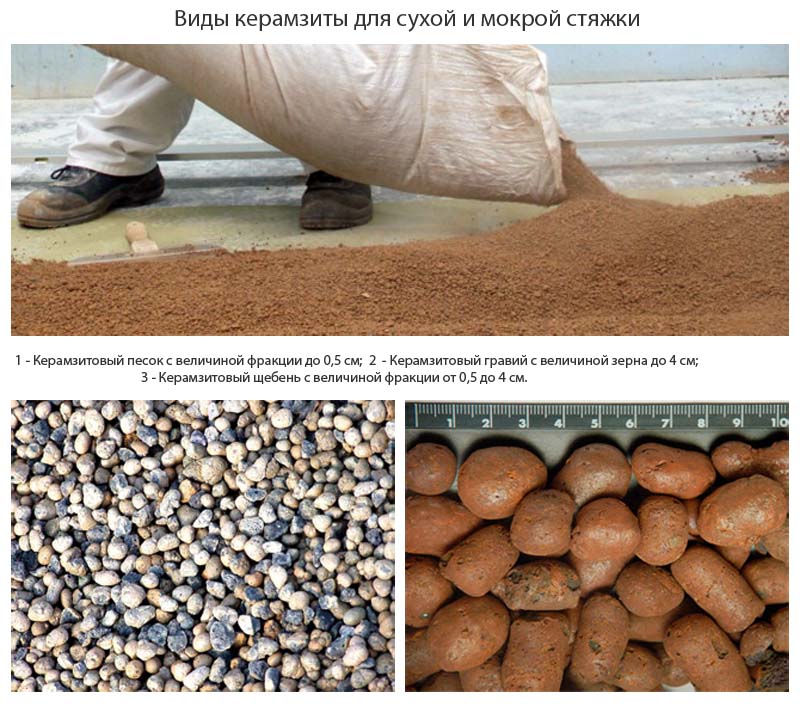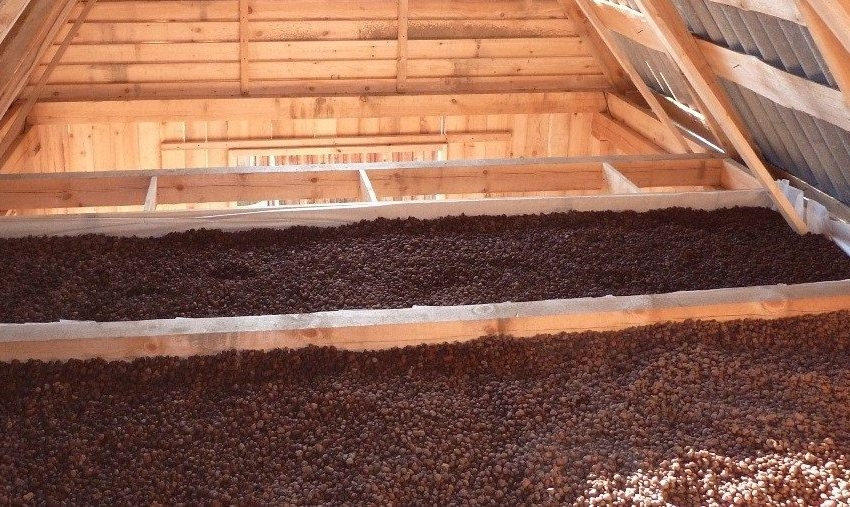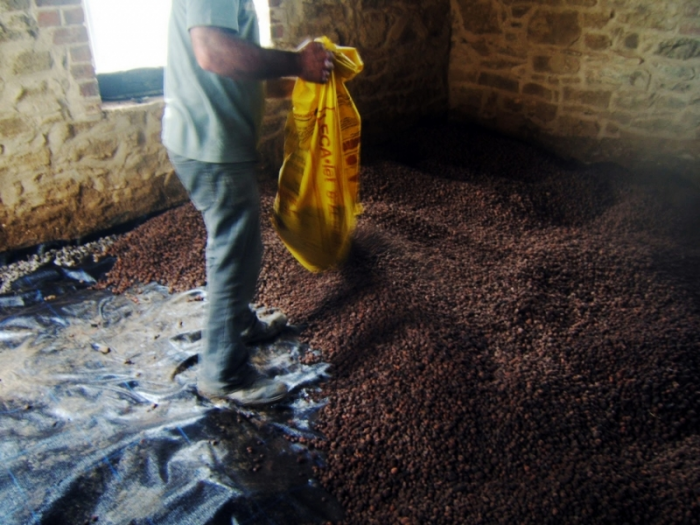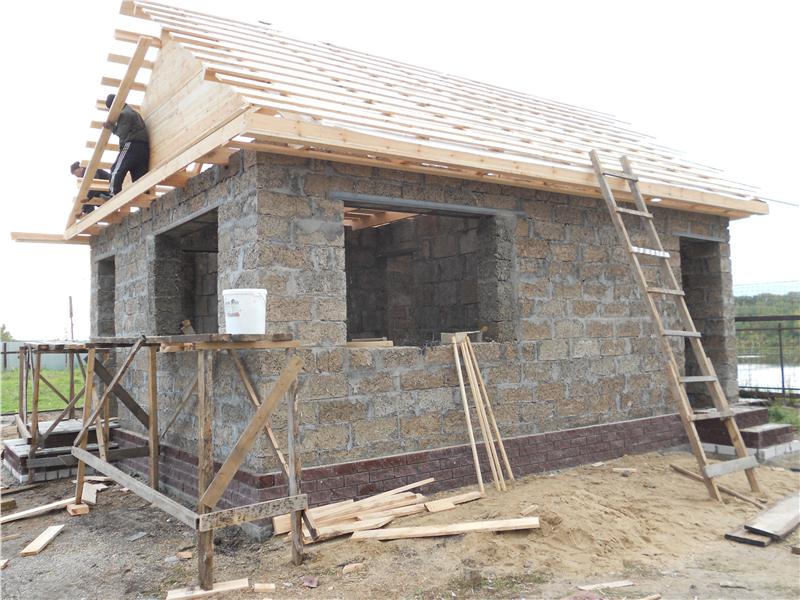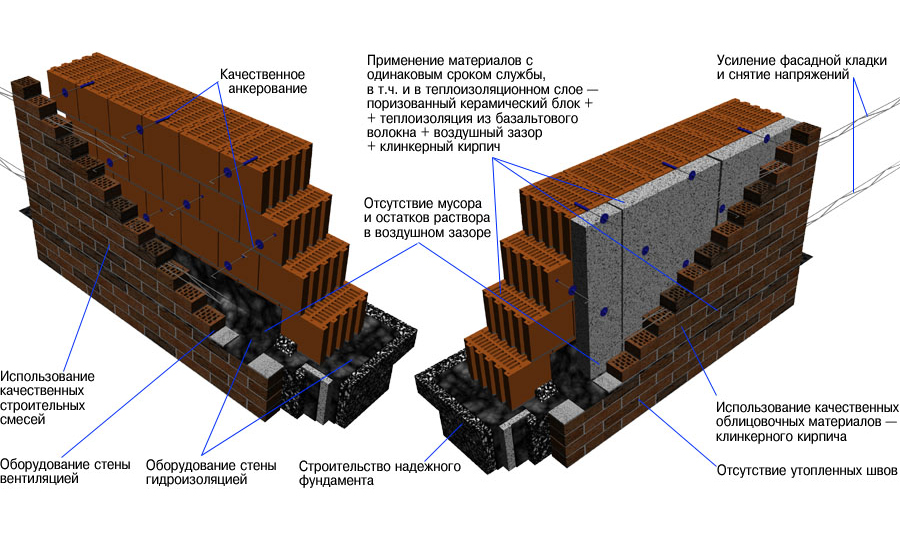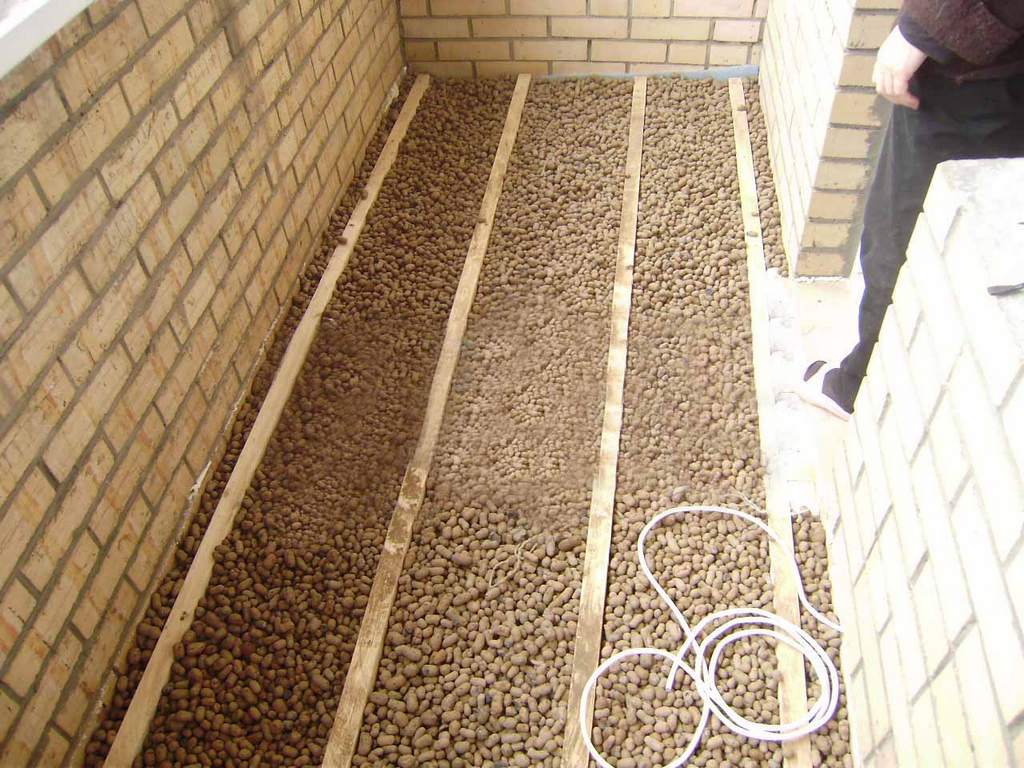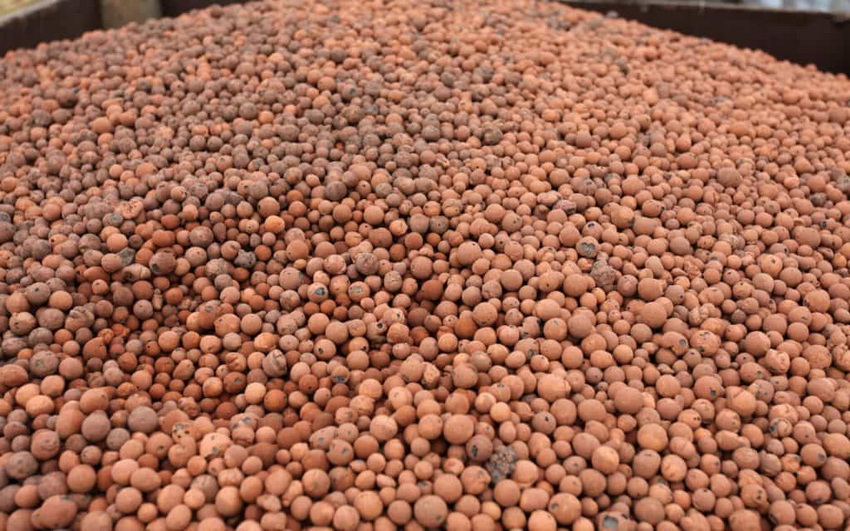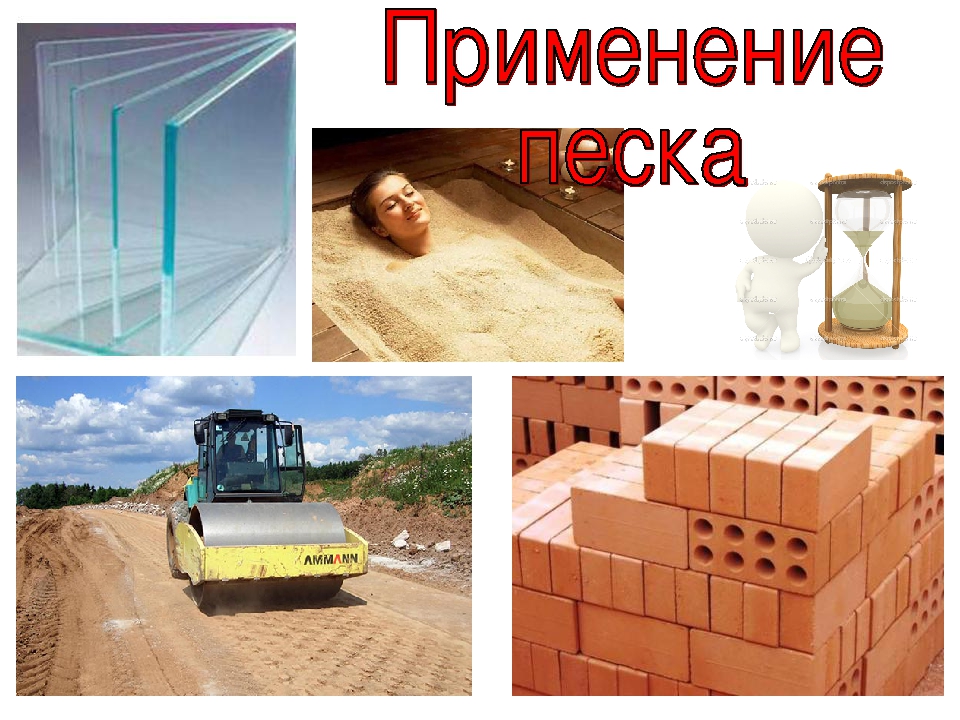Properties and advantages of expanded clay in construction
- A light weight. Depending on raw materials, impurities and fraction, the weight of expanded clay per cubic meter can vary from 250 to 1000 kg.
- High strength. The method of production and raw materials from which expanded clay is produced is almost identical to the production of bricks, and therefore the strength of expanded clay is comparable to the strength of brick. The less porous expanded clay granules, the more durable it is.
- Fireproof. Expanded clay is a fraction of artificial stone, the production of which is carried out by firing at high temperatures. Expanded clay does not burn and does not support fire and is completely fireproof.
- Water resistance. Expanded clay is a porous material and its water resistance depends on the method of its production. Fired expanded clay granules, with closed pores, are waterproof and even float in water for a long time, practically do not absorb liquid. The water absorption of such expanded clay is 8-10%. Expanded clay with open pores, produced by the dry method, has a pore opening and absorbs moisture well. Its water absorption can be up to 20%. water resistance is retained only with high-quality material
- Thermal conductivity and frost resistance. According to this indicator, expanded clay is at a high level, and its thermal conductivity is inversely proportional to its porosity. High porosity provides good heat retention. That is why one of the main purposes of expanded clay in construction is insulation of walls, floors and ceilings. Of course, to achieve the same effect, the expanded clay layer must be thicker than the mineral wool layer. But in the case of dang, expanded clay wins with its durability, strength and a number of other indicators. At the same time, a layer of expanded clay 10 cm, in terms of thermal conductivity, is equivalent to a brick wall of 50 cm and 25 cm of a wall made of natural wood.
- Soundproofing. Expanded clay has good performance as a sound insulation material. It absorbs sounds well and suppresses noise from the street and between floors. Effectively solves the problem with loud neighbors and disgruntled downstairs neighbors. expanded clay layer should be at least 10-15 cm
- Durability. The correct combination with other materials and adherence to the expanded clay installation technology will ensure its functionality and integrity for many decades. Since it is not directly exposed to the environment, the longevity of expanded clay can be up to 100 years.
- Chemical and biological resistance. Does not enter into a chemical reaction with most chemical compounds, acids, alkalis and others. In expanded clay, conditions are not created for the cultivation of mold and mildew.
- Not interesting to rodents and insects. Due to the flowability of expanded clay, rodents and insects cannot equip themselves with housing in this material. Possible nests or holes of rodents are simply self-filled with expanded clay even at the equipment stage. Therefore, even an accidentally running rodent will leave the walls and roof of your house. mice do not start in expanded clay, unlike other types of insulation
- Eco-friendly material. The use of natural materials - clay, guarantees the safety of expanded clay for health. Does not accumulate harmful substances, odors and background radiation. In the European Region, expanded clay houses are analogies of a healthy and sustainable home.
Features of production
Clay with a high content of iron oxides is used as the main raw material for the manufacture of expanded clay. Low-melting clays with the required swelling coefficient are selected.To improve the properties of the final product, various organic additives (peat, sawdust, sulfate-alcohol stillage) can be introduced.
The principle of expanded clay production technology is based on a special mode of drying, roasting and cooling of raw materials. Firing is carried out in special kilns in the form of rotating drums installed with a certain inclination.
The process is provided with hot air heated by nozzles. After the completion of firing, the material is crushed into the required fractions. In general, the processing cycle of raw materials takes about 40-50 minutes.
Some helpful tips for using cement
In order for the concrete solution made from cement to meet all the requirements and be suitable for creating strong, reliable, durable structures and products, it is necessary to remember some rules.
Useful tips for using cement:
- It is necessary to store the binder no more than 3 months and only in a place protected from moisture and wind. Best of all on special pallets, in factory bags.
- The correct recipe should be looked for immediately and components can be added only at the stage of mixing dry ingredients. When the cement is mixed with water, it is no longer possible to add dry components. Therefore, water is initially poured in a little bit, achieving the desired consistency.
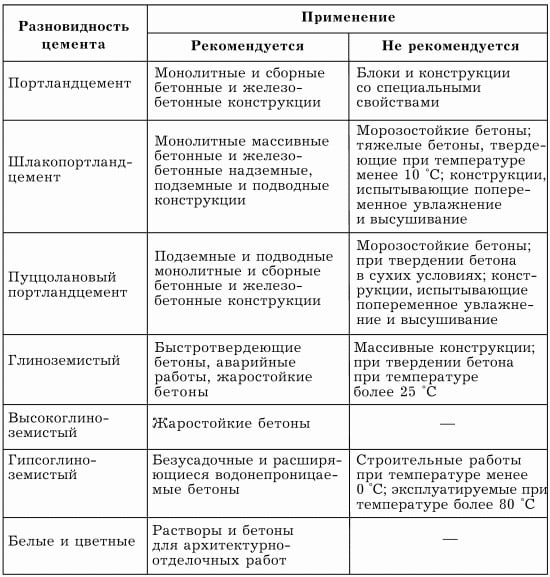
- An open bag of cement can be stored for no more than 1 week in low humidity conditions and a maximum of 1 day in high humidity conditions.
- The caked cement cannot be used - some advise to break the stones and use it as an ordinary binder, but the reaction has already passed and the chemical formula cannot be returned back. Such cement can be used only in the form of a filler and then in a volume not exceeding a third of the total volume of fillers.
- When mixing concrete, the proportions must be strictly followed, any deviation will lower the properties.
- In cold weather, you need to use special frost-resistant cement. In extreme heat, it is better not to work or arrange for careful maintenance of the hardening concrete.
- More cement or too high a grade does not mean higher strength. You always need to focus on standards and use the brand that is suitable for a particular type of work. When choosing a binder of a low grade, concrete will not provide the desired characteristics, high - costs will not be justified by irrelevant properties.
Construction features
Construction by the method of monolithic pouring into the formwork involves taking into account certain features and nuances
The most important thing is to correctly choose the proportions of the components and the components themselves, so that they meet the requirements for size, properties, and other parameters. The filling solution is especially thoroughly mixed to form the foundation, load-bearing walls, ceilings
The walls are formed using removable formwork. The mixture can be prepared independently and poured into segments or ordered at the factory. In the second case, it is necessary to ensure the possibility of access of special equipment to the construction site and take care of the required length of the mixture supply hose.
Regardless of who and where mixes the solution, it is advisable to add special additives to the composition to improve the density and strength, reduce the susceptibility of finished structures to frost, moisture, and other negative factors.
You can build a team or do it yourself. In case of self-construction, the pouring process and other stages will take much more time and effort, but they will significantly save money on the absence of the need to attract additional employees and a special automatic mixer.
Specifications
Expanded clay is a loose insulation consisting of ceramic pellets fired at a high temperature. The raw materials are low-melting clays or shale. At the exit, producers receive, after sorting, gravel (expanded clay, not to be confused with sedimentary rock) - 3 fractions, sand and crushed stone.
Gravel
Gravel includes round or oval ceramic granules. Depending on the diameter, they are sorted into three types:
- small fraction - 5-10 mm. Basically they go under "warm floors". In addition, they are mixed with other fractions, after which the walls are insulated or added to the cement mortar for pouring the screed;
- medium fraction - 10-20 mm. The main type of insulation. It is used to create an insulating layer on the floor, walls, ceiling, roof;
- large-fraction - 20-40 mm. They are used only where a thick layer of insulation is required, for example, filling over the ground for pouring a concrete screed.
Sand
Small, up to 5 mm in diameter, ceramic pellets are called sand. It is obtained either by sorting gravel - fines are crumbled, or by crushing large sintered pieces of expanded clay. Sand with a fraction of up to 3 mm used when receiving "warm" masonry mortar for bricks and blocks. Fraction 3-5 mm serves as the main filler of expanded clay cement floor screed.
Crushed stone
Crushed stone granules have an irregular shape and a diameter of 0.5 to 1.0 cm. Obtained by crushing large pieces of sintered clay. It is used in the production of lightweight concrete. Expanded clay has 10 density categories: from 250 to 800 kg / m3 and 13 grades of strength (in compression). The main physical and technical indicators are shown in the table.
Table 1.
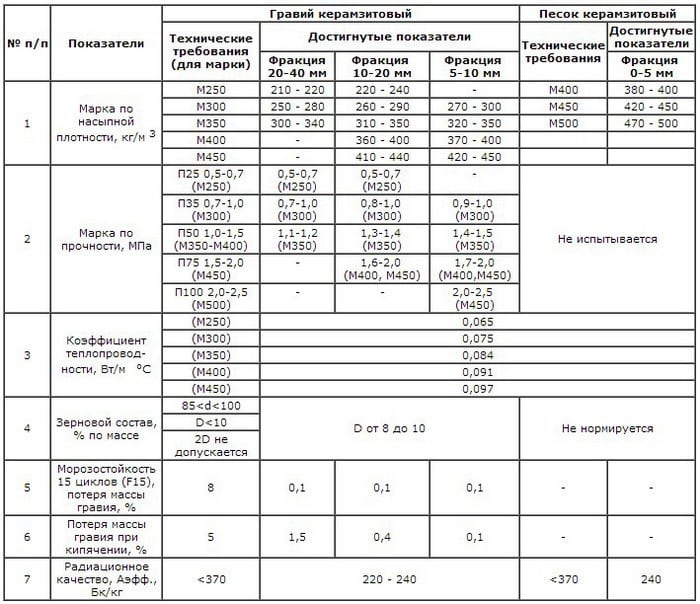 The main physical and technical indicators of expanded clay.
The main physical and technical indicators of expanded clay.
Expanded clay - properties, characteristics
- long service life;
- fireproof;
- weatherproof;
- lasting;
- does not emit a smell;
- frost-resistant;
- environmentally friendly;
- low thermal conductivity;
- high bulk density;
- a light weight;
- waterproof.
How expanded clay is made
Its derivative raw material is a certain grade of low-melting clay, environmentally friendly, without impurities and additives.
Expanded clay is made by firing clay in ovens at high pressure and elevated temperatures. Therefore, to the question - what is expanded clay, one can answer that it is processed clay.
During the production process, the clay boils, it is made by bubbles - granules. The outer shell begins to melt, creating a smooth, even surface. If we cut it neatly in half, we will see that, inside, each granule has a porous structure. At the exit, granules of various diameters are obtained, which are then sorted and stored by size. The price and scope of application will depend on the size.
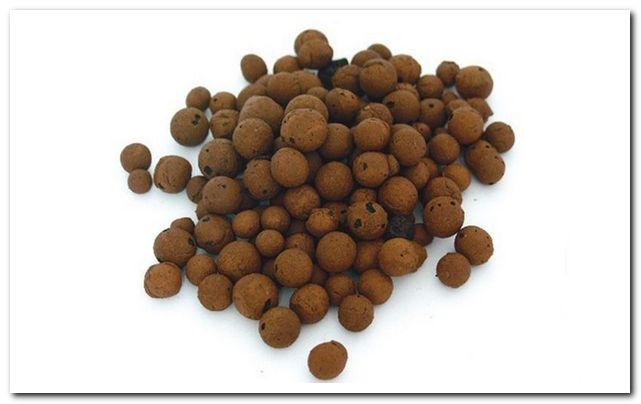
Application of the material in agriculture
Agrarians successfully use it in the process of growing vegetables. Excellent drainage, it removes excess water from the root system of plants, preventing the development of rot and fungi. The grains optimize the air exchange of plants, especially those planted in dense clay soils. Granules can be added when arranging the beds; for effective drainage, a layer 2-3 cm thick will be enough. Moreover, this can be done in the home garden.
At home, grains are also used to grow potted flowers. They look much better with this kind of drainage. Another promising direction for using ceramics is hydroponics. Granular material is a great substitute for plant soil. Its porous varieties first absorb the nutrient substrate, and then gradually give it to the roots. There is a kind of dosing of nutrition, which has a beneficial effect on the development of plants.
Preparatory work
The screed laying technology requires careful preparation of the base, its hydro and sound insulation, the installation of beacons and the fastening of a damper tape around the entire perimeter of the wall.
Subfloor preparation
The initial, but most important stage in the construction of the floor is the preparation of its foundation.
Concrete floors are cleaned of old screed and debris, cracks are repaired.
Rotten and walking boards change in the wooden subfloor, cracks and fallen out knots are sealed with parquet putty.
The subgrade is leveled.A layer of expanded clay and sand is backfilled on it to create a cushion under the screed. The process of preparing the base for the screed is discussed in detail in the material "Preparing the base for the screed", which can be viewed here.
Waterproofing
The use of expanded clay in the floor screed requires mandatory work on the waterproofing of the screed. This is due to the hydrophobic properties of expanded clay, as a result of which the expanded clay floor screed is destroyed by moisture.
Insulating layers can be laid under the screed, on the screed, and also, which is gaining popularity recently, on both sides at the same time.
Polyethylene film is widely used as insulating material.
Other waterproofing materials: roofing material, bitumen, liquid rubber, special primers, etc. are also used, but much less frequently, due to their higher cost and high labor costs.
The features of waterproofing are described in detail in the work "Waterproofing under a screed" (see here).
Thermal insulation
The problem of home insulation is very relevant for individual developers. In private houses, the ground floor is either on the ground or above the basement. In both cases, it is necessary to carry out thermal insulation work.
Warming the floor with expanded clay under the screed allows you to keep the heat in the house better than modern materials - polystyrene and expanded polystyrene. In addition, it is easier to implement and much cheaper.
Soundproofing
Sound insulation of the floor, when using expanded clay as one of the components of the screed, is not performed. The function of noise absorption is performed by porous expanded clay granules.
Installation of beacons
It is impossible to get a flat screed surface without the use of beacons when pouring the solution. Their installation involves two stages of work:
- determining the screed line and applying it to the wall, as well as calculating the number of rows of lighthouses and determining their location based on the floor (a description of the procedure for performing the work is given here);
- installation of beacons.
The type of lighthouses is dictated by two factors: the method of waterproofing and the type of screed. So, the use of film and roll materials to protect against moisture excludes the device of beacons on self-tapping screws.
The dry screed provides for the extraction of the beacon guides, which can only be done when using U-shaped profiles (the technology of the beacon device is discussed in the material "How to set the beacons for the floor screed?").
Damper tape
When dry screed, the damper tape is attached against the floor covering so that it does not creak during operation. In other cases - for the entire thickness of the screed layer, to compensate for its expansion under the influence of temperature and humidity.
The tape is attached to the wall with a stapler or double-sided tape.
Specifications
The material parameters are established by GOST 9757-90, which regulates the quality of porous building materials.
Some indicators are not regulated, but still remain an important characteristic. Let's consider in more detail the main properties of expanded clay
- Fractional composition. In total, three fractions of the material have been installed, having a size range of 5-10 mm, 10-20 mm, 20-40 mm. A separate category includes fractions that are rarely used in construction work. These include expanded clay granules and crushed stone with sizes from 2.5 to 10 mm, as well as a wide mixed fraction from 5 to 20 mm. Heat-insulating expanded clay layers, used in the form of a bulk mass, represent a mixture of all fractions - from 5 to 40 mm. This is due to the need to fill the voids in the heat-insulating layer, which increases the rigidity of the structure and eliminates convection air currents.
- Expanded clay grades by bulk density (bulk bulk density). In total, seven values have been established: up to 250 kg / m3 - grade 250, from 250 to 300 kg / m3 - grade 300, similarly - grades 350, 400, 450, 500, 600.Grades 700 and 800 are not released for general sale and are produced only with the agreement of the consumer. The true density (true bulk density) is 1.5-2 times greater than the bulk density. This parameter characterizes the density of the material without taking into account the gaps between the granules or fragments of the material;
- Expanded clay grades in terms of strength. For gravel, there are 13 grades that differ in the compressive strength in the cylinder. For crushed stone, 11 grades are normalized, having the same designations as gravel grades. The strength of crushed stone and gravel of the same brand is different. So, for grade P100, the compressive strength of gravel is from 2.0 to 2.5 MPa, while crushed stone is from 1.2 to 1.6 MPa. There is a connection between the grades of expanded clay in terms of density and strength - an increase in density leads to an increase in strength. The relationship between the brands is also regulated by the GOST 9757-90 standard, which excludes the production of low-quality high-density expanded clay, which collapses under low load.
- The compaction coefficient is a value agreed with the consumer, which does not exceed the value of 1.15 and is used to take into account the compaction of expanded clay mass as a result of transportation or caking. The use of the coefficient is associated with frequent shipment of material in bulk, convenient for the sale of large batches.
- Thermal conductivity is the most important parameter characterizing thermal insulation properties. For expanded clay, the thermal conductivity coefficient is from 0.10 to 0.18 W / (m? ° C). The range of values is rather narrow, which indicates the high thermal insulation properties of the material. With increasing density, the thermal conductivity coefficient increases. This is due to a decrease in the number and volume of pores containing the main heat insulator - air.
- Water absorption is an important parameter that shows the behavior of a material when exposed to water. Expanded clay refers to relatively resistant to materials and is characterized by a water absorption value of 8-20%.
- Sound insulation - like most thermal insulation components, expanded clay has increased sound insulation. The best results are achieved with soundproofing a wooden floor, in which expanded clay acts as a layer between the outer part of the floor and the interfloor slab.
- Frost resistance - due to low water absorption and clay, which is the basis of the material, expanded clay has sufficiently high frost resistance properties. Numerical values are not standardized by standards, since expanded clay is frost-resistant "by default". Only indicators of building stones are normalized, which contain expanded clay - expanded clay blocks.
How to calculate how many cubes of expanded clay in a bag will tell the following video:
The use of expanded clay in agriculture
According to most farmers, the material is the best drainage and substrate for crops grown in hydroponics.
Expanded clay absorbs moisture during irrigation and gives up when the soil dries. Quite often, crushed stone and sand are added to optimize air exchange between the plant and the air in heavy clay soils.
Drainage, based on expanded clay, does not allow the soils to acidify and silt. At the same time, the material does not weigh down the soil and prevents the formation of molds, the appearance of mosses and fungi.
The material showed itself remarkably when arranging beds. A layer of 2 - 3 cm, poured into its base, provides excellent drainage. Gravel sprinkled between plants retains moisture, performing a mulching role.
Expanded clay has a hard outer shell and a porous core, which makes it a unique organic substrate for hydroponics, a full-fledged soil substitute.
How can you use expanded clay?
One of the main uses of expanded clay is a filler for lightweight concrete. Monolithic walls are erected from this material, rough screeds are poured.This is especially true when it is necessary to lay a screed of impressive dimensions, but at the same time it is impossible to overload the floor.
In addition, expanded clay is also used as an insulation, but it must be a highly porous material, and before using it as a backfill insulation, calculations that are not very complicated, but accessible only to specialists, should be made.
Regarding its capabilities in the field of heat saving, we can only say that as a filling option, it loses to other heaters. The estimated thickness of the expanded clay backfill with a density of 600 kg / m3 is approximately 40 cm. This is not entirely effective.
At the same time, used in the manufacture of expanded clay concrete blocks, it significantly increases their heat-saving characteristics.
Expanded clay is actively used in the construction of a dry screed. Now this method is very popular, as it allows you to get a solid base for laminate, linoleum, cork in the shortest possible time, literally back.
Also, due to its unique properties, including resistance to moisture and frost, it is actively used for filling the foundation during the construction of various buildings and structures. This makes it possible to reduce the depth of the foundation by almost 2 times - from 1.5 m to 0.8 m, which leads not only to savings in building materials, but also to prevent freezing of the soil near the foundation of the building.
The latter is fraught with distortion of the doors and window frames of the building.
Application of expanded clay gravel
| Indicators | Fractions of expanded clay gravel, mm | ||
| 8/20 | 4/10 | 0/4 | |
| Pitched roof insulation | + | ||
| Thermal insulation and the creation of a slope of flat roofs, lawns on terraces | + | ||
| Production of ultra-lightweight concrete and lightweight ceramic-concrete blocks | + | + | + |
| Thermal insulation and sound insulation of floors and ceilings | + | + | |
| Thermal insulation and reduction of the depth of laying of foundations | + | + | |
| Thermal insulation of soil | + | + | |
| Thermal insulation and drainage in earth embankments of roads laid in water-saturated soils | + | + | |
| Hydroponics, creating an optimal microclimate for the root system of plants | + | + | |
| As a dry backfill for GVL floors in order to improve the heat and sound insulation capacity of the floor | + | ||
| Warm solution production | + | ||
| Production of facade and paving slabs | + |
Expanded clay will also be useful to those who lay heating networks near their homes. First, you will be sure that your pipes are heating you, and not the cold earth. Secondly, in the event of an accident, you will not have to dig long and tediously in search of a leak. Thirdly, after a successful repair, nothing prevents you from using the material again, while it will not lose its properties.
Expanded clay can be used not only in construction. With its help, the paths at the summer cottage are landscaped and even the yield of fruit trees is increased, creating a kind of drainage system for their roots. The same applies to indoor flowers and plants. For these purposes, expanded clay is used smaller in size.
The use of expanded clay when pouring the foundation as a concrete filler is not recommended. In this case, it is better to use any crushed stone, even crushed stone, even granite. Expanded clay is bad in this quality in that it has smooth rounded edges, and this does not prevent the occurrence of work on shear (shear-break) of the concrete mass. And the foundation should precisely exclude cracks (shifts) of the tape in the cross section.
The use of expanded clay in construction
Expanded clay is a versatile material. It is widely used not only in the construction of buildings, but also in the construction of infrastructure: roads and highways, in agriculture, gardening.
Consider the benefits of expanded clay for construction:
- Highly efficient insulation. The porosity of the material makes it a good insulation, therefore, with the help of expanded clay, the walls of the house are insulated from the outside, by filling the space between the main, bearing, wall and the facing layer of brick or other material.In the same way, the ceiling is insulated by filling a layer on the attic floor and the floor, creating a crimson layer between the cement screed and the rough base of the floor. It is also used as an insulating embankment under a wooden flooring. expanded clay can be used to insulate walls, floors and roofs
- Production of expanded clay concrete building blocks. Expanded clay is the main material for the manufacture of such a unique, highly efficient and environmentally friendly material for the construction of houses as expanded clay concrete blocks. Read more about the properties of expanded clay concrete. production of expanded clay blocks
- Good substrate for many substrates. It is used as a substrate for the system - warm floor, for pouring insulated floor screed, the use of expanded clay eliminates the need to lay a deep foundation that will not freeze through.
- Insulation for heating systems. Due to its low thermal conductivity, the expanded clay mound maintains a stable temperature in plumbing systems and contributes to a systematic decrease or increase in temperature in them, with a sharp change in temperature.
- Used for leveling floors. Due to its light weight, expanded clay bulk, it is possible to even out large differences in the plane of the floor covering without creating an additional weight load on the foundation. 5-10 cm of crushed stone or clean concrete screed is much heavier than the same layer of expanded clay.
The use of expanded clay in the country
Thanks to these properties, expanded clay is used as a heater in the construction of garden buildings (for floors, walls, roofs, basements) and as a filler for foundation mortar. And also - in the construction of garden paths. This is especially true in wetlands.
A special pillow is made of expanded clay, which forms a dense layer and withstands strong pressure
But most often expanded clay is used in the garden, vegetable garden and landscape design. It acts as insulation and drainage for the roots.
Expanded clay gravel provides plants with comfortable growing conditions: it improves the structure of the soil, making it air and water permeable, protects plant roots from drying out in hot weather and the formation of mold in rainy weather, reduces the risk of plant diseases, as well as the appearance of various pests.
Mulching with expanded clay increases the productivity of fruit and berry and vegetable crops
Also, expanded clay can be used for growing various crops in hydroponics.
There are two ways to increase soil fertility using expanded clay:
- When planting trees and shrubs, dig a hole, pour expanded clay gravel on the bottom, and on top of it - a small layer of soil, on which the seedling must be installed. From above, you need to sprinkle the seedling with earth a little, and cover the remaining space of the pit with expanded clay. This method is called layered.
- Just mix fine (about 5 mm) expanded clay with soil and plant a plant in the resulting mixture.
And fine-grained expanded clay can be used in the garden for mulching. This will help protect the soil surface from mold growth, as well as reduce the amount of watering and retain moisture in the soil for a long time.
In horticulture, expanded clay is widely used for drainage under apple trees, pears, currants, grapes, etc.
Production of expanded clay, its composition
Expanded clay composition
The main material from which construction expanded clay is made is sedimentary clay rocks. The composition of clayey rocks is quite diverse and includes not only ordinary clay, but a variety of impurities: quartz up to 30%, organic compounds, feldspar, carbonates and a small amount of compounds of various metals. The composition of expanded clay depends on the characteristics of a particular area where the extraction of raw materials for production was carried out.
In addition to the components initially contained in the raw material, in order to achieve the swelling effect, artificial impurities and organic compounds (diesel fuel and oil) can be added to the composition at the production stage.
Expanded clay production
It depends on the composition of natural raw materials and is carried out in three main ways:
Dry production method
It is used for the manufacture of expanded clay from the most homogeneous clayey rocky rock, with a minimum amount of available impurities. The mined homogeneous rock is crushed and sent for roasting. It is considered the easiest and cheapest way to produce expanded clay.
Wet production method
With this method, clay rock is mixed with water and additional impurities, which are necessary to obtain certain properties of expanded clay. This mixture is fed into a rotary kiln, where it is naturally crumbled and dried under the influence of kiln gases.
This method is effective when using wet clayey rocks and the need for additional inclusions in the material.
furnace for the production of expanded clay
Plastic production method
The most costly method by which a material with improved technical characteristics is created. In this case, moisturizing of raw materials and the addition of additional impurities are also used to achieve a homogeneous mass. But unlike dry production, from the resulting mixture, granules of approximately the same shape are formed on a belt press, which are fed into the kiln for firing and drying. Thus, a solid expanded clay is obtained of a uniform shape, with all the properties of a brick. However, unlike bricks, it has greater thermal efficiency due to its porosity and significantly less weight. Read more about the properties of bricks.

